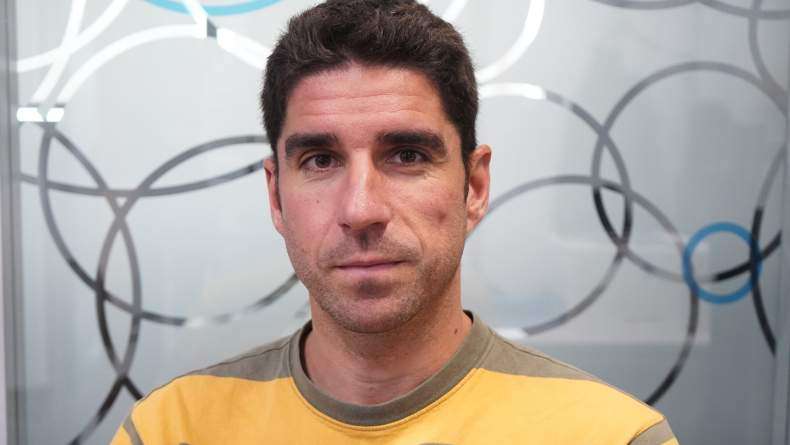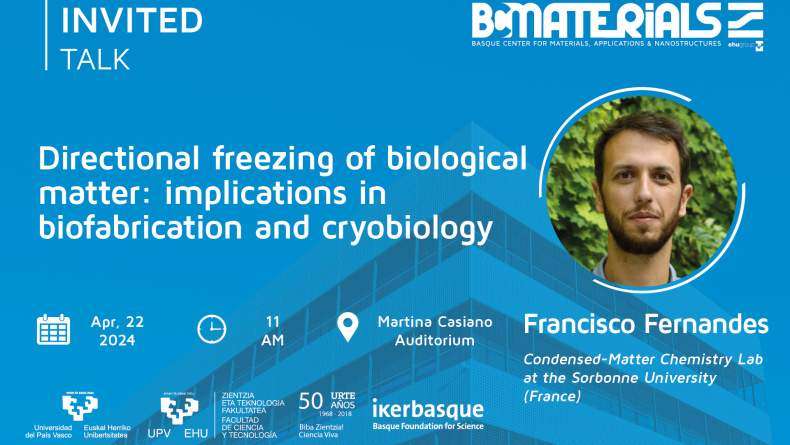BCMaterials Fortnightly Seminar #65: Ana María Schönhöbel & Maite Goiriena

ANA MARÍA SCHÖNHÖBEL
(BCMATERIALS)
Study of Sm1-xCexFe9Co2Ti by magnetization and Mössbauer measurements
Currently rare earths like neodymium, samarium, dysprosium or terbium are frequently used in high energy permanent magnets for electric motors and generators. Because these elements are expensive and in limited supply, cerium seems to be a good alternative to replace traditional rare earths, as it is more plentiful in terms of availability and cost, while less performing from the point of view of magnetism. The aim of this work is to study the effect of substituting Samarium by Cerium on the structure and magnetic properties of Sm1‐xCexFe9CoTi2(x=0, 0.25, 0.5, 0.75, 1) alloys. Melt‐spun and heat‐treated ribbons are studied by X-ray diffraction, SEM, Mössbauer spectroscopy and magnetization measurements. Heat treatments have been chosen as to produce the highest coercivity, as previously explored by other authors. Mössbauer spectroscopy allows determining the type and amount of the different phases present in the samples, as bcc Fe and 1:12 phase with ThMn12 structure, with more accuracy than X-ray diffraction. It also can determine the effect of Cerium in the local environment of each of the three crystallographic iron sites of the 1:12 structure, by following parameters such as Isomer Shift, Quadrupole Splitting and Hyperfine Field. From the analysis of the magnetization curves we obtain the coercivity, saturation magnetization and remanence. The anisotropy constant is estimated using the law of approach to saturation. Structural and magnetic data are correlated to disclose the role of Cerium in these alloys.
MAITE GOIRIENA
(BCMATERIALS)
Magnetization reversal in circular vortex dots of small radius
The magnetic vortex state was studied quite intensively during the last years. Micron-sized Permalloy (Fe20Ni80 alloy) dots are the most usual system displaying this magnetic configuration. In the vortex ground state the magnetic moments are curled in the dot plane and only at the center, the core of the vortex points perpendicularly to the plane. This configuration gives rise to a characteristic magnetic behavior as a function of the in-plane applied magnetic field: for low fields, the vortex core is displaced reversibly in the plane until it reaches the dot lateral border, where it is annihilated and the sample becomes magnetically saturated. Reducing the magnitude of the bias field, the vortex is nucleated at a lower magnetic field than the annihilation field and then follows back the original reversible path. This originates a hysteresis loop with no remanence or coercive field and an open lobe at high field. Apart from the intrinsic interest to the vortex state, the lack of remanence, together with a large permeability, are appealing for applications such as the magneto-mechanical actuation for biomedical treatments. In this field, smaller particles with the same magnetic characteristics would be very promising because they could largely expand the application range, for instance, providing an intracellular actuation. Despite its relevance, very few studies deal with magnetic dots below 100 nm in diameter due to the difficulty of sample preparation and characterization. Out of them, a thorough study of an array of Fe dots, prepared using alumina templates has been conducted with dot diameters down to 52 nm, revealing the existence of a transition from a single domain to a vortex state. In this work, we present the results obtained for Permalloy circular dots fabricated by hole mask colloidal lithography with small diameters 2R ranging from 60 to 140 nm, and different thicknesses from 20 to 60 nm. The hysteresis loops were studied by means of SQUID and MOKE magnetometry. A clear transition from the single domain behavior to a well-defined vortex state was observed increasing the dot sizes, which is consistent with the magnetic phase diagrams elaborated from experimental and theoretical results. The study is complemented with a detailed morphological characterization by means of electronic and atomic force microscopies and correlated with magnetic force microscopy (MFM) results. Typically the vortex core size in micron-sized dots is about 20-30 nm and, therefore, the core can be safely neglected describing the dot hysteresis loops. However, in the dots with a diameter of 140 nm, the MFM images reveal that the vortex core occupies about half the size of the dots. Additionally, micromagnetic simulations and analytic calculations have been performed to clarify the magnetization configuration in the dots with different diameter to thickness ratios. They provide an estimation of the size of the vortex core, which is about 2Rc = 60 nm in diameter, in good agreement with the MFM results. Interestingly, this vortex core diameter is approximately equal to the dot diameter for the smaller dots (2R = 60 nm). Nevertheless, this does not prevent the existence of a pronounced magnetic vortex behavior as demonstrated by the measured hysteresis loops. Such hysteresis loops signal that the vortex ground state is gradually transformed to the single domain state. The vortex annihilation/nucleation fields considerably decrease with the relative vortex core radius Rc/R increasing. The standard approach utilized so far in the literature is not applicable anymore and the critical fields in sub-100 nm dots should be described accounting explicitly the large vortex core.Related news
Invited Talk with Joel Villatoro on April 25
On April 25, BCMaterials will receive Dr. Joel Villatoro as a new invited speaker with the talk entitled “"All-Optical Fiber Sensing". The talk will start at 10:00 at the Martina Casiano auditorium (…Eloie Gallego, New Research Technician Assistant
BCMaterials welcomes Eloie Gallego, who joins our center as new Research Technician Assistant. She will work giving service to a growing laboratory activity in our facilities. Eloie’s academical and…Jorge Saiz, New Ramón y Cajal Researcher at BCMaterials
We are happy to receive Jorge Saiz Galindo as new Ramón y Cajal Fellow, post-doctoral researcher in BCMaterials. Dr. Saiz obtained his degree in Biology and his PhD at the University of Alcalá, in…Invited Talk with Francisco Fernandes on April 22
BCMaterials will offer a new invited talk on April 22 with Francisco Fernandes, Associate Professor of the Condensed-Matter Chemistry Lab at the Sorbonne University (France) The talk will begin at…



